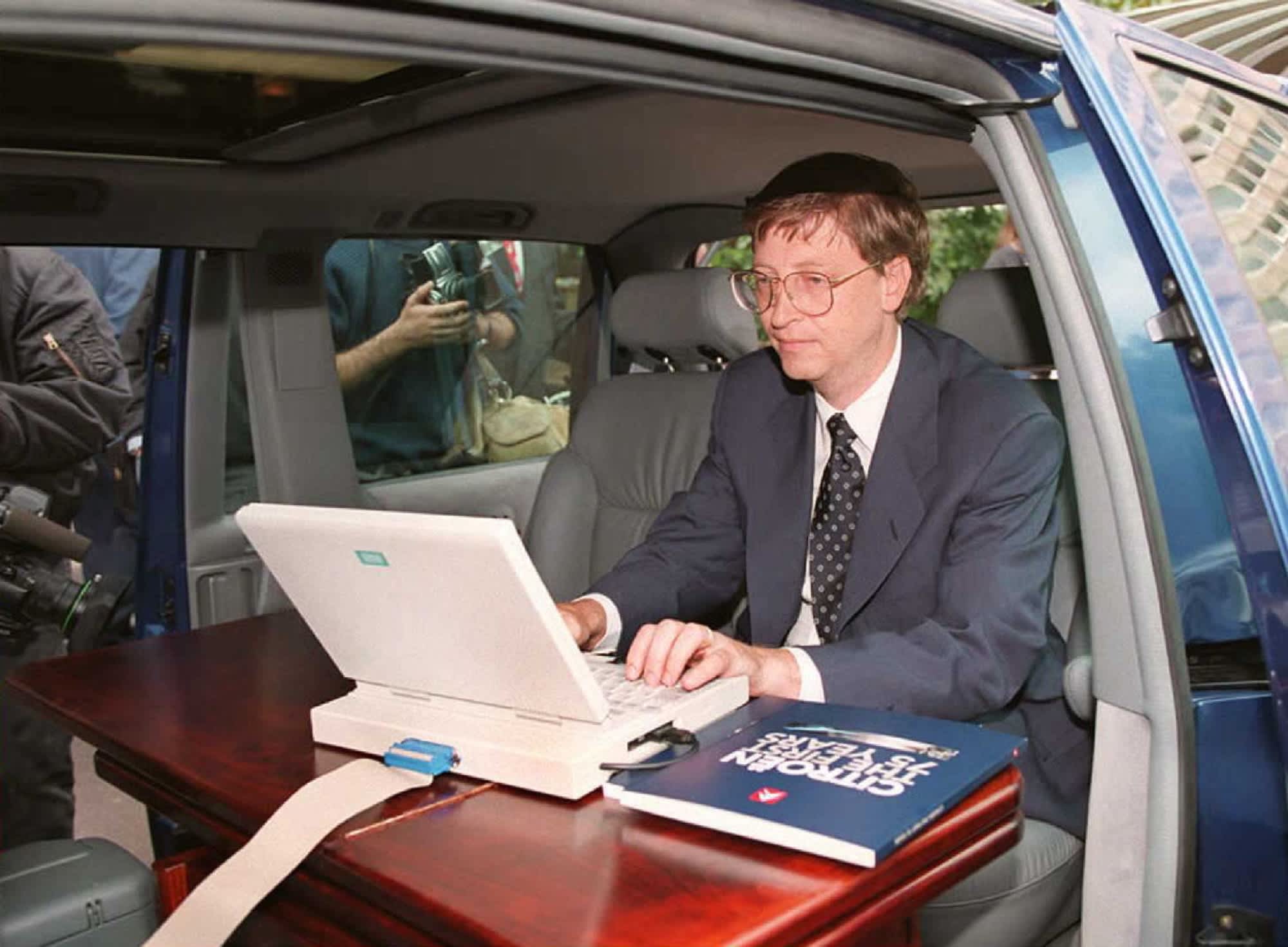Products You May Like
When you start a new job, you’ll often get a rundown of the company’s history and culture. Usually, though, that information isn’t coming from one of the wealthiest people on the planet.
In 1994, Microsoft made an orientation video for new employees that prominently features co-founder Bill Gates, who was already fabulously wealth at then-age 39. At the time, Gates was still CEO of Microsoft, and he was worth an estimated $9.35 billion, according to Forbes. Today, that number is more than $136 billion.
In the roughly 15-minute video, which was restored and uploaded to YouTube by the Computer History Archives Project in November, Gates welcomes new Microsoft employees into the fold by recapping the company’s founding story and some of its signature moments — and even offering surprising praise for rival tech giant Apple.
Perhaps most notably, he also touts Microsoft as a crucial part of the future of tech. “I think there’s an absolutely incredible opportunity here, and I think it’s going to be very exciting,” Gates tells his employees in the video.
Here are some of the video’s top highlights:
The Microsoft origin story
Microsoft’s founding story is well-known, but hearing it directly from Gates is worth the price of the video’s campy ’90s music and sound effects.
In the early 1970s, Gates and co-founder Paul Allen, who attended the same Seattle-area high school, discussed computer software — even as Gates studied pre-law at Harvard University. In the video, Gates says that Allen predicted great leaps forward in technology over the coming years, due largely to recent advances in microprocessor technology.
Those leaps, Allen suggested, could be “pretty rare, pretty dramatic,” Gates recalls. At one point, Gates says, he even asked Allen: “Are you serious?”
He was. Then, in 1975, a now-defunct Albuquerque, New Mexico-based company called MITS released one of the first commercially successful personal computers, the Altair 8800. Together, Gates and Allen developed a version of the programming language BASIC for the Altair, prompting Gates to leave Harvard to continue the work.
At first, the pair took jobs at MITS. The following year, they formed a partnership they called “Micro-Soft.” The rest is history.
A mouse ‘mistake’
In the video, Gates says a now-ubiquitous part of the personal computer experience took more than a full year to finally catch on.
The product? A PC-compatible computer mouse, which Microsoft released in 1983. The mouse became “a very profitable” part of Microsoft’s business, Gates says, but “at first it was like maybe we had made a mistake.”
The company ordered an initial run of 50,000 units, but Gates notes that it took an entire year to sell out its stock. Eventually, he says, the mouse caught on as Microsoft “continued to evolve the design, going to a sleeker and sleeker appearance over time.”
“Today, we sell many, many hundreds of thousands in a month,” he says in the 1994 video. A Microsoft spokesperson declined to share today’s sales numbers, but tells CNBC Make It that the mouse “remains a major business for the company.”
Crediting Apple for ‘a very, very important milestone’
Microsoft and Apple have a long, complicated history as both collaborators and fierce rivals.
In the early 1980s, Microsoft was actually one of Apple’s most prominent software developers. Gates and his team created Microsoft software specifically for new Macs, including the first version of Microsoft Word.
In a 1996 documentary, Jobs called some of Microsoft’s early applications for Apple “terrible,” and complained about Microsoft having “no taste.” But in the 1994 video for new Microsoft employees, Gates has only pleasant things to say about the Macintosh computer, which first came out in 1984.
“The Macintosh was a very, very important milestone,” Gates says. “Not only because it established Apple as a key player in helping define new ideas in the personal computer [space], but also because it ushered in graphical interface.”
He’s referring to graphical user interface, or GUI, which enabled Macintosh computer screens to feature icons and images instead of lines of text. The tech industry was initially resistant to GUI, Gates says, but “Apple bet their company on it.”
Apple’s bet proved wise: Home computer users preferred the simplicity and aesthetic of clicking on icons and images. “That’s why we got so involved in building applications for the Macintosh early on,” Gates explains. “We thought they were right, and we really bet our success on it as well.”
Sign up now: Get smarter about your money and career with our weekly newsletter
Don’t miss:
